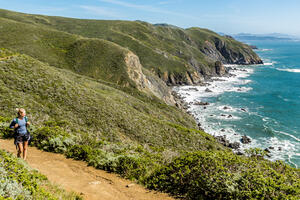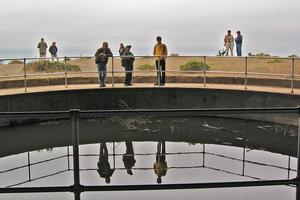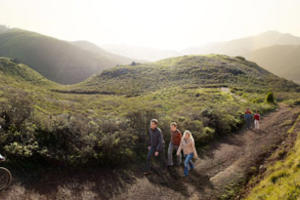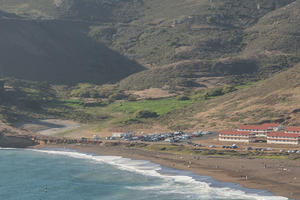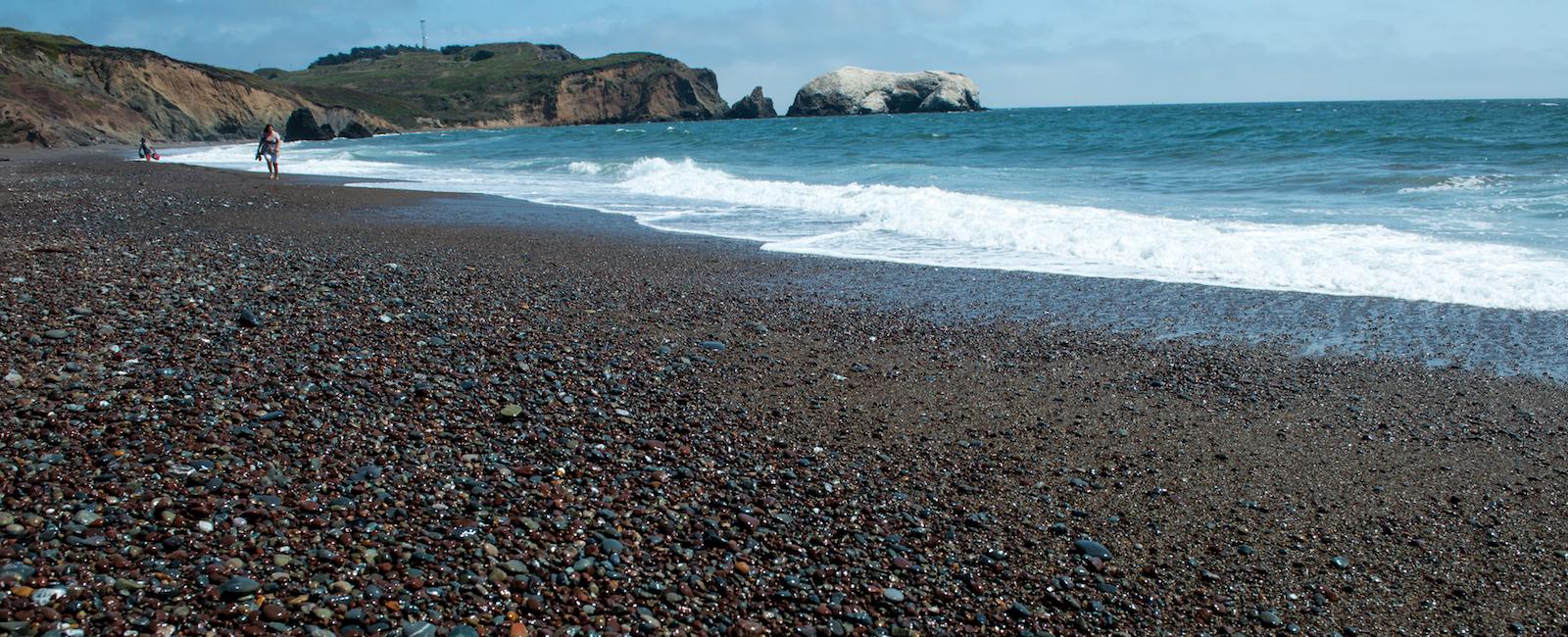
Windswept, exhilarating, and covered with unique red and green pebbles, this beach is just three miles northwest of the Golden Gate Bridge. Sheltered by cliffs and bounded by a lagoon, it offers good picnic sites and is ideal for kite flying or just watching the roaring Pacific. Attentive beach-walkers may see (but must not collect) jasper, carnelian, black agate, and jade among the beach sands.
Two military forts once guarded these shores. Fort Barry and Fort Cronkhite—whose structures now serve as National Park Service facilities—were once nerve centers of Marin Headlands military activities long ago.
Plan Your Visit
click Icon to show on map
- Watch birds from an elevated vantage point by heading south along the Coastal Trail near Bird Island.
- On Sundays and holidays, San Francisco’s Municipal Transportation Agency (MUNI) provides bus service between San Francisco and Rodeo Beach.
- There are picnic areas at Rodeo Beach; they are located adjacent to the parking area overlooking the beach (this site is wheelchair accessible), and along Rodeo Lagoon.
- Restroom facilities at the main (northernmost) beach parking lot include outdoor showers.
Bird Watching from the Beach
Just off Rodeo Beach, Bird Island’s white, guano-covered crags are thronged with cormorants, gulls, and pelicans, which can be watched from shore. The cliff-top trail overlooking the island is one of the best pelican watching locations on the West Coast; as many as 1,200 of these great birds may settle on the rocks at one time.
Inland, look for egrets, ducks, and other birds that feed and shelter in the shallow wetlands of Rodeo Lagoon. For the protection of the beach and the endangered tidewater goby—which burrows in the lagoon’s soft shoreline sediment—people and pets are not allowed in any part of Rodeo Lagoon.
The Parks Conservancy has been supporting wetland habitat protection and restoration efforts at Rodeo Beach—in particular by removing highly invasive cape ivy. Controlling this extremely fast-growing weed is critical to protecting recently restored habitats for the endangered marsh sandwort and threatened California red-legged frogs that live here.
